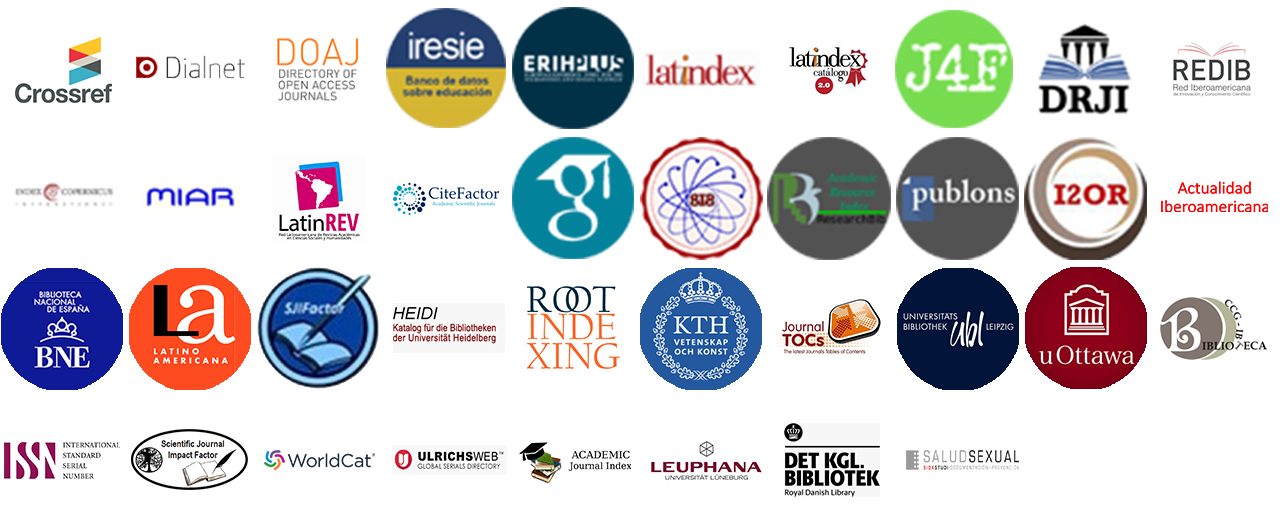Detection of nodes in LAA’s Hidden Zones via Supervised Machine Learning
DOI:
https://doi.org/10.36825/RITI.08.15.011Keywords:
LAA, LBT, Hidden Node, RSRP, RSRQ, RSSIAbstract
LTE operation in unlicensed spectrum bands, based on Licensed-Assisted Access (LAA), is considered as an option to increase the capacity of 4G wireless networks. These solutions use a Listen Before Talk (LBT) protocol that enables the eNodeB (eNB) to access the medium opportunistically, avoiding collisions from/to other eNBs. However, the hidden node problem must be addressed in LAA networks to reduce or prevent the degradation of the network. The efficiency of the LTE-LAA system will improve by identifying hidden nodes and after deciding if user equipment (UE) affected by the hidden condition should remain or should change from unlicensed to licensed band. In this work, we use two supervised machine learning algorithms to determine if UEs located in the border cell are affected by hidden nodes. We trained a logistic regression and a neural network with standard parameters obtained from UE to detect when UE is affected by collisions due to the presence of hidden nodes. The results show that the neural network has a perfect performance as a detector of UE facing hidden nodes.
References
LTE-U Forum: Alcatel-Lucent, Ericsson, Qualcomm Technologies Inc., Samsumg Electronics & Verizon. (2015). Technical Report Coexistence, Study for LTE-U SDL V1.0. Recuperado de: https://docplayer.net/34274503-Lte-u-forum-alcatel-lucent-ericsson-qualcomm-technologies-inc-samsung-electronics-verizon-lte-u-technical-report.html
3GPP-TR36.889. (2015). Study on Licensed-Assisted Access to Unlicensed Spectrum. Recuperado de: https://www.3gpp.org/ftp/Specs/archive/36_series/36.889/
Kwon, H., Jeon, J., Bhorkar, A., Ye, Q., Harada, H., Jiang, Y., Liu, L., Nagata, S., Ng, B. L., Novlan, Oh, J., Yi, W. (2017). Licensed-Assisted Access to Unlicensed Spectrum in LTE Release 13. IEEE Communications Magazine, 55 (2), 201–207.
ETSI EN 300 328 - V2.1.1. (2016). Data transmission equipment operating in the 2,4 GHz ISM band and using wide band modulation techniques. Recuperado de: https://www.etsi.org/deliver/etsi_en/300300_300399/300328/02.01.01_60/en_300328v020101p.pdf
Han, S., Liang, Y. C., Chen, Q., Soong, B. H. (2016). Licensed-Assisted Access for LTE in Unlicensed Spectrum: A MAC Protocol Design. IEEE Journal on Selected Areas in Communications, 34 (10), 2550–2561.
Rupasinghe N., Gülvenç, I. (2015). Reinforcement learning for licensed-assisted access of LTE in the unlicensed spectrum. Trabajo presentado en IEEE Wireless Communications and Networking Conference (WCNC), New Orleans, LA, 1279–1284. doi: 10.1109/WCNC.2015.7127653.
Alliance Wi-Fi R1-167881. (2016). Response to Liaison Statement on coexistence simulation results for DL only LAA. Recuperado de: https://www.3gpp.org/FTP/Inbox/LSs_from_external_bodies/WiFi_Alliance/20160811%20Response%20to%203GPP%20Liaison%20Statement%20on%20coexistence%20simulation%20results%20for%20DL%20only%20LAA.zip
Farnham, T. (2012). REM based approach for hidden node detection and avoidance in cognitive radio networks. Trabajo presentado en IEEE Global Telecommunications Conference (GLOBECOM), Anaheim, CA, 1391–1397. doi: 10.1109/GLOCOM.2012.6503308.
Baswade, A. M., Sathya, V., Tamma, B. R., Franklin, A. A. (2016). Unlicensed Carrier Selection and User offloading in dense LTE-U networks. Trabajo presentado en IEEE Globecom Workshops (GC Wkshos), Washington, DC, 1-6. doi: 10.1109/GLOCOMW.2016.7849071.
3GPP R1-145128. (2014). Avoiding hidden node problem by full-duplex radio from UE perspective. Inst. Inf. Ind. RAN1#79. Recuperado de: https://www.3gpp.org/ftp/tsg_ran/WG1_RL1/TSGR1_79/Docs/R1-145128.zip
3GPP R1-151047. (2015). Discussion on hidden node issue for LAA. Samsung, RAN1 Ad-hoc Meet. Recuperado de: http://www.3gpp.org/ftp/tsg_ran/WG1_RL1/TSGR1_AH/LTE_LAA_1503/Docs/R1-151047.zip
3GPP R1-150420. (2015). Solutions to DL LAA Hidden Node and Channel Reuse. Inst. Inf. Ind., p. 6. Recuperado de: https://www.3gpp.org/DynaReport/TDocExMtg--R1-80--31254.htm
3GPP R1-151123. (2015). Discussion of hidden node problem of LAA. Huawei, HiSilicon.
Recuperado de: http://www.3gpp.org/ftp/tsg_ran/WG1_RL1/TSGR1_AH/LTE_LAA_1503/Docs/R1-151123.zip
Ali, Z., Giupponi, L., Mangues-Bafalluy, J., Bojovic, B. (2017). Machine learning based scheme for contention window size adaptation in LTE-LAA. Trabajo presentado IEEE 28th Annual International Symposium on Personal, Indoor, and Mobile Radio Communications (PIMRC), Montreal, QC, 1-7. doi: 10.1109/PIMRC.2017.8292751.
Giupponi, L., Henderson, T., Bojovic, B., Miozzo, M. (2016). Simulating LTE and Wi-Fi Coexistence in Unlicensed Spectrum with ns-3. Recuperado de: https://arxiv.org/abs/1604.06826
3GPP TR 36.814 V9.0.0. (2010). Evolved Universal Terrestrial Radio Access (E-UTRA); Further advancements for E-UTRA physical layer aspects (Release 9). Recuperado de: http://www.3gpp.org/ftp/Specs/archive/36_series/36.814/36814-900.zip
Rebala, G., Ravi, A., Churiwala, S. (2019). Learning Models. In G. Rebala, A. Ravi, and S. Churiwala (Eds.) An Introduction to Machine Learning (pp. 19–23). Cham: Springer International Publishing.
Ng, A. (2020). Supervised learning [Folleto de la clase CS229]. Palo Alto, CA: Universidad Standford. Recuperado de: http://cs229.stanford.edu/notes2020spring/cs229-notes1.pdf
Kubat, M. (2017). Artificial Neural Networks. En M. Kubat (Eds.), An Introduction to Machine Learning (pp. 91–111). Cham: Springer International Publishing.
Ma, T., Avati, A., Katanforoosh, K., Ng, A. (2020). Deep Learning [Folleto de la clase CS229]. Palo Alto, CA: Universidad Standford. Recuperado de: http://cs229.stanford.edu/notes2020spring/cs229-notes-deep_learning.pdf
Eaton, J. W., Bateman, D., Hauberg, S., Wehbring, R. (2020). GNU Octave Version 5.2.0 Manual: A High-Level Interactive Language for Numerical Computations. Recuperado de: https://octave.org/octave.pdf
Published
How to Cite
Issue
Section
License
Copyright (c) 2020 Revista de Investigación en Tecnologías de la Información

This work is licensed under a Creative Commons Attribution-NonCommercial-NoDerivatives 4.0 International License.
Esta revista proporciona un acceso abierto a su contenido, basado en el principio de que ofrecer al público un acceso libre a las investigaciones ayuda a un mayor intercambio global del conocimiento.
El texto publicado en la Revista de Investigación en Tecnologías de la Información (RITI) se distribuye bajo la licencia Creative Commons (CC BY-NC
 ), que permite a terceros utilizar lo publicado citando a los autores del trabajo y a RITI, pero sin hacer uso del material con propósitos comerciales.
), que permite a terceros utilizar lo publicado citando a los autores del trabajo y a RITI, pero sin hacer uso del material con propósitos comerciales.



